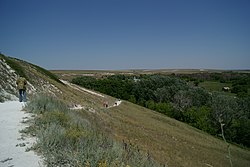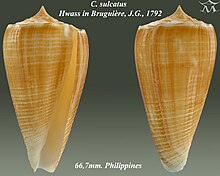HD 88231
HD 88231| 관측 데이터 Epoch J2000.0EquinoxJ2000.0(ICRS) | |
|---|---|
| 별자리 | 레오 마이너 |
| 적경 | 10h 11m 12.77777s[1] |
| 적위 | +37° 24' 06.8383°[1] |
| 겉보기 등급(V) | 5.84[2] (5.79 - 5.88)[3] |
| 특성. | |
| 스펙트럼형 | K3 III[4] |
| B-V 색지수 | +1.29[5] |
| 변수형 | 의심스러운[6] |
| 측성학 | |
| 반지름 속도(Rv) | 7.38±0.22km[7]/s |
| 고유운동(μ) | RA: -20.679 mas/년[1] Dec.: -29.496 mas/년[1] |
| 시차(ppm) | 5.7353 ± 0.0663 mas[1] |
| 거리 | 569 ± 7 ly (304 ± 2pc) |
| 절대 등급(MV) | −0.59[8] |
| 세부 사항 | |
| 덩어리 | 1.17[9] M☉ |
| 반지름 | 24.9±1.3[10] R☉ |
| 광도 | 228±5[1] L☉ |
| 표면 중력(log g) | 1.76+0.10 −0.06[11] cgs |
| 온도 | 4,487±122K[12] |
| 금속성 [Fe/H] | +0.05[9] 덱스 |
| 기타 명칭 | |
| 데이터베이스 참조 | |
| SIMBAD | 데이터. |
HD 88231(HR 3993)은 작은사자자리 방향에 있는 별이다.겉보기 등급은 5.[2]84로 이상적인 조건에서는 맨눈으로 희미하게 볼 수 있습니다.가이아 DR3 시차 측정은 약 569 [1]광년의 거리를 의미하며, 현재 이 천체는 7.38 km/[7]s의 태양 중심 시선 속도로 멀어지고 있습니다.현재 거리에서 HD 88231의 밝기는 성간[14] 소멸로 인해 0.17 등급 감소하고 절대 등급은 -0.[8]59입니다.
이 천체의 분광형은 K3 [4]III로 진화한 적색 거성임을 나타냅니다.질량은 태양과[9] 비슷하지만 반지름은 [10]태양의 24.9배로 커졌습니다.이 별은 4,487 [12]K의 유효 온도에서 확대된[1] 광구에서 태양의 228배의 광도를 방출합니다. HD 88231은 태양의 112%([Fe/H] =[9] +0.05)의 철이 풍부한 약간의 금속입니다.
HD 88231은 1969년 [15]투미크론 스카이 서베이 관측에 근거하여 K-밴드에서 변광성으로 의심되었습니다.1994년의 한 논문은 그것이 시각 [3]대역에서 5.79에서 5.88 사이의 범위에 있다는 것을 발견했습니다.그러나 2004년 현재 그 변동성은 [16]확인되지 않았습니다.
레퍼런스
- ^ a b c d e f g VizieR에서 이 소스에 대한 Vallenari, A.; et al. (Gaia Collaboration) (2022). "Gaia Data Release 3. Summary of the content and survey properties". Astronomy & Astrophysics. arXiv:2208.00211. doi:10.1051/0004-6361/202243940.Gaia DR3 기록.
- ^ a b Høg, E.; Fabricius, C.; Makarov, V. V.; Urban, S.; Corbin, T.; Wycoff, G.; Bastian, U.; Schwekendiek, P.; Wicenec, A. (March 2000). "The Tycho-2 catalogue of the 2.5 million brightest stars". Astronomy and Astrophysics. 355: L27–L30. Bibcode:2000A&A...355L..27H. ISSN 0004-6361. S2CID 17128864.
- ^ a b Percy, John R.; Wong, Nancy; Bohme, Dietmar; Curott, David R.; Dempsey, Frank; Fortier, George L.; Ganis, Matt; Parello, Stephanie; Landis, Howard J.; Luedeke, Kenneth D.; Pray, Donald; Smith, Michael S.; Snyder, Leroy F.; Thompson, Raymond R.; Wasson, Rick; Williams, Harold O.; Walker, William S. G.; Wood, James E. (June 1994). "Photometric surveys of suspected small-amplitude red variables III: an AAVSO photometric photometry survey". Publications of the Astronomical Society of the Pacific. IOP Publishing. 106: 611. Bibcode:1994PASP..106..611P. doi:10.1086/133420. ISSN 0004-6280. S2CID 122593597.
- ^ a b Wilson, Ralph E.; Joy, Alfred H. (March 1950). "Radial Velocities of 2111 Stars". The Astrophysical Journal. 111: 221. Bibcode:1950ApJ...111..221W. doi:10.1086/145261. eISSN 1538-4357. ISSN 0004-637X. S2CID 122883647.
- ^ Haggkvist, L.; Oja, T. (1970). "Results of BV photometry 1969-70 (Uppsala refractor)". Private Communication. Bibcode:1970Priv.........0H. S2CID 231475662.
- ^ Samus’, N. N.; Kazarovets, E. V.; Durlevich, O. V.; Kireeva, N. N.; Pastukhova, E. N. (January 2017). "General catalogue of variable stars: Version GCVS 5.1". Astronomy Reports. 61 (1): 80–88. Bibcode:2017ARep...61...80S. doi:10.1134/S1063772917010085. eISSN 1562-6881. ISSN 1063-7729. S2CID 125853869.
- ^ a b Famaey, B.; Jorissen, A.; Luri, X.; Mayor, M.; Udry, S.; Dejonghe, H.; Turon, C. (January 2005). "Local kinematics of K and M giants from CORAVEL/Hipparcos/Tycho-2 data. Revisiting the concept of superclusters". Astronomy and Astrophysics. 430: 165. arXiv:astro-ph/0409579. Bibcode:2005A&A...430..165F. doi:10.1051/0004-6361:20041272. S2CID 17804304.
- ^ a b Anderson, E.; Francis, Ch. (May 2012). "XHIP: An extended hipparcos compilation". Astronomy Letters. 38 (5): 331–346. arXiv:1108.4971. Bibcode:2012AstL...38..331A. doi:10.1134/S1063773712050015. eISSN 1562-6873. ISSN 1063-7737. S2CID 119257644.
- ^ a b c d Anders, F.; et al. (August 2019). "Photo-astrometric distances, extinctions, and astrophysical parameters for Gaia DR2 stars brighter than G = 18". Astronomy & Astrophysics. 628: A94. arXiv:1904.11302. Bibcode:2019A&A...628A..94A. doi:10.1051/0004-6361/201935765. eISSN 1432-0746. ISSN 0004-6361. S2CID 131780028.
- ^ a b Kervella, P.; Thévenin, F.; Di Folco, E.; Ségransan, D. (October 2004). "The angular sizes of dwarf stars and subgiants". Astronomy & Astrophysics. 426 (1): 297–307. arXiv:astro-ph/0404180. Bibcode:2004A&A...426..297K. doi:10.1051/0004-6361:20035930. eISSN 1432-0746. ISSN 0004-6361.
- ^ Takagi, Yuhei; Itoh, Yoichi; Oasa, Yumiko (April 25, 2010). "Age-Determination Method of Pre-Main Sequence Stars with High-Resolution I-Band Spectroscopy". Publications of the Astronomical Society of Japan. Oxford University Press (OUP). 62 (2): 501–508. arXiv:1004.1971. Bibcode:2010PASJ...62..501T. doi:10.1093/pasj/62.2.501. ISSN 0004-6264. S2CID 118626904.
- ^ a b Stassun, Keivan G.; et al. (9 September 2019). "The Revised TESS Input Catalog and Candidate Target List". The Astronomical Journal. 158 (4): 138. arXiv:1905.10694. Bibcode:2019AJ....158..138S. doi:10.3847/1538-3881/ab3467. eISSN 1538-3881. hdl:1721.1/124721. S2CID 166227927.
- ^ "HD 88231". SIMBAD. Centre de données astronomiques de Strasbourg. Retrieved June 29, 2023.
- ^ Gontcharov, George A.; Mosenkov, Aleksandr V. (28 September 2017). "Verifying reddening and extinction for Gaia DR1 TGAS main sequence stars". Monthly Notices of the Royal Astronomical Society. 472 (4): 3805–3820. arXiv:1709.01160. Bibcode:2017MNRAS.472.3805G. doi:10.1093/mnras/stx2219. eISSN 1365-2966. ISSN 0035-8711. S2CID 118879856.
- ^ Neugebauer, G.; Leighton, Robert B. (August 1969). "Two-micron sky survey; a preliminary catalog". NASA Special Publication. 3047. Bibcode:1969NASSP3047.....N. S2CID 117746703.
- ^ Samus, N. N.; Durlevich, O. V. (November 2004). "VizieR Online Data Catalog: Combined General Catalogue of Variable Stars (Samus+ 2004)". VizieR Online Data Catalog: II/250. Bibcode:2004yCat.2250....0S.



